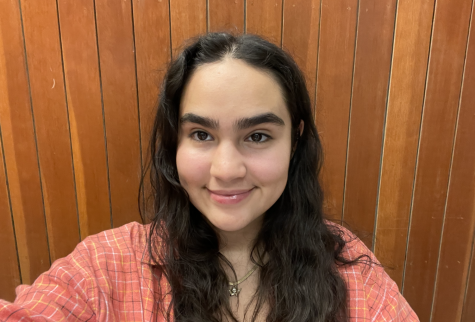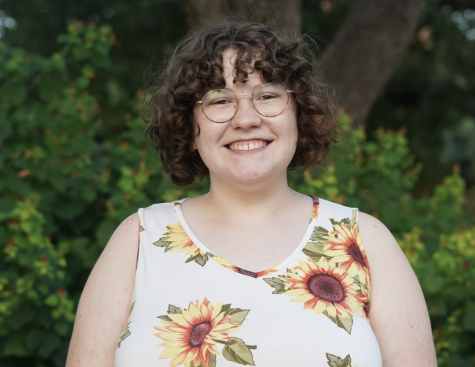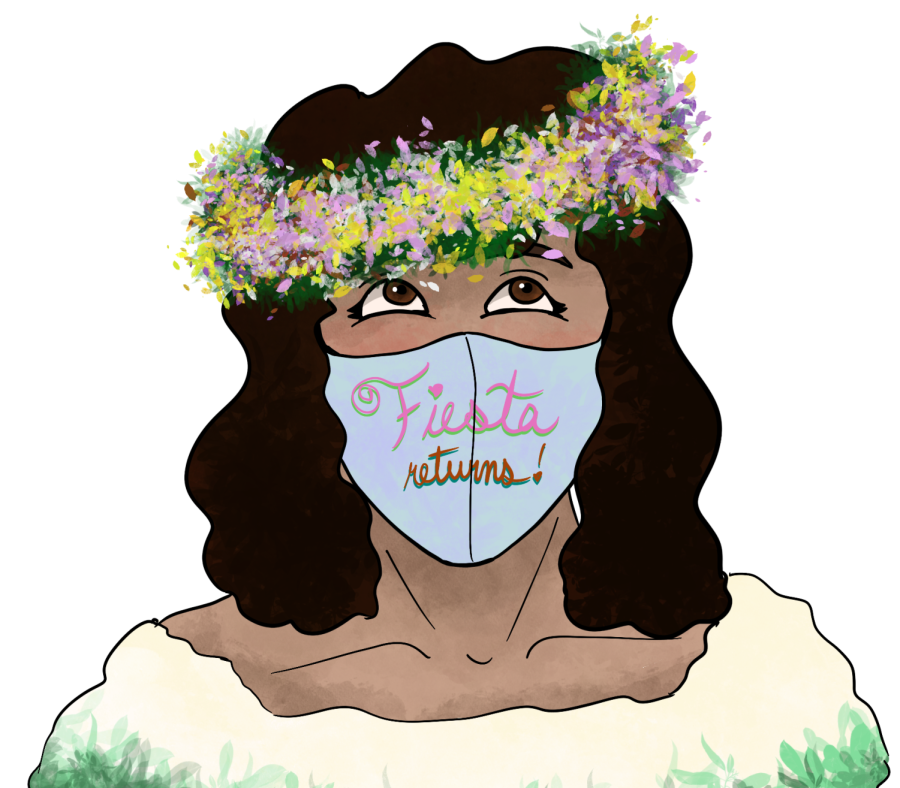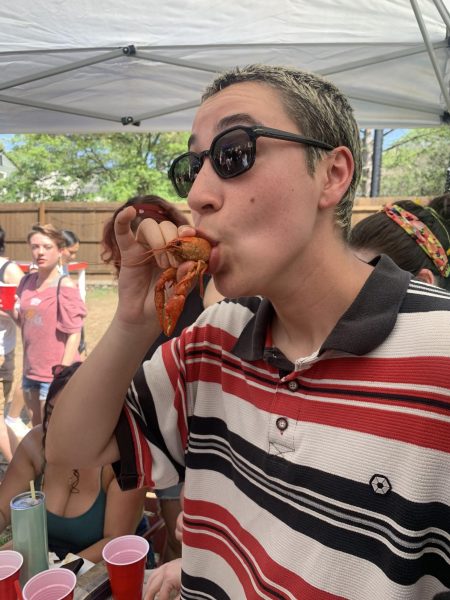Trinity Diversity Connection discusses San Antonio’s Fiesta celebration
Scholars examine Fiesta’s history and cultural appropriation vs. appreciation
For the first time since the start of the COVID-19 pandemic, the famous Fiesta celebration will return with all of its events in the spring (March 30 – April 10). According to the Fiesta San Antonio website, Fiesta was initially a “one-parade event” meant “to honor the memory of the heroes of the Alamo and the Battle of San Jacinto.”
The event has evolved into a two-week celebration that attracts tourists and boosts San Antonio’s economy. The Trinity Diversity Connection (TDC) put together a panel to discuss the history of Fiesta and its impact on San Antonio. They also wanted to discuss how Trinity students can take this dialogue beyond the panel and into the community to encourage the accurate portrayal of one of San Antonio’s largest events.
Before the introduction of the panel, the TDC read a land acknowledgment to recognize that Trinity resides on the Indigenous land once known as Yanaguana or Yanawana. The panel consisted of Norma Elia Cantú, the Norine R. and T. Frank Murchison Distinguished Professor of the Humanities at Trinity, David Spener, professor of sociology and anthropology, and Lucero Saldaña, adjunct professor of Mexican American Studies at San Antonio College. Courtney Balderas, director for Student Diversity and Inclusion, encouraged TDC to put this event together.
“As I have been thinking about how to conscientiously bring a special celebration of Fiesta to Trinity in 2023, it is important to me that we start this process first and foremost from a place of understanding, acknowledgment of history and authenticity. Trinity Diversity Connection is a persistent advocate for justice and it seemed fitting to have the conversation start here with expert panelists,” Balderas wrote in an email.
One of the first questions the panelists were asked was, “What is the history and origin of this tradition in San Antonio?” The conversation revolved around how people from the community do not know why Fiesta is a celebration. They also addressed how not being informed is not the fault of community members. Rather, it is the fault of the lack of emphasis the school system has on Fiesta’s history, despite it being a big event for San Antonio school districts.
“[Fiesta] was very new to me whenever I came to San Antonio. So coming as an undergrad I started questioning San Antonians, ‘what is this event?’ And no one could give me a direct answer until I took a Mexican-American studies course,” Saldaña said. “There’s so much history involved like what happened at the Alamo and the battle of San Jacinto, and that’s some of the history that isn’t really acknowledged.”
The panelists further discussed what happened at the Battle of San Jacinto, which took place near present-day Houston in April 1836. It resulted in the defeat of the Mexican Army under the control of General Santa Anna. The conflict occurred because settlers that came from the United States wanted independence from the regulatory laws of the Mexican government. The Mexican army’s defeat at San Jacinto and subsequent signing of the Treaties of Velasco on May 14, 1836, allowed Texas to become an independent nation. The panelists said it was interesting how Fiesta revolves around Mexican culture despite the whole celebration stemming from the liberation of Texas from Mexico.
“I will focus on this notion of reappropriation and resignification, giving these events new meanings and giving a counter-narrative about what is going on,” Spener said. “I think that efforts to give a new meaning to this event [Fiesta] by people who weren’t involved in its creation is something that we could all strive for.”
Resignification, or giving something a new meaning rather than eradicating it, was emphasized in the conversation because of how large of an impact Fiesta has on San Antonio. According to the Fiesta San Antonio website, Fiesta has an “economic impact of over $340 million.” Funds collected, such as from rental spaces for vendors, go toward supporting local nonprofits and scholarship opportunities for college students, as well as helping to restore or preserve historic properties. The panelists recognized the economic impact Fiesta has on the city.
“A lot of people do street selling during Fiesta, and for some families, that is where they make most of their money during the course of the year. Informal commerce is very common in Mexico,” Spener said. “And so, we need to consider the possibility that the meaning of Fiesta, especially for working-class Chicanos, Chicanas, Mexicanos, Mexicanas, Mexicanx, is different than what the creators of the event intended.”
They also recognized that, although it provides economic benefits to the city, there are instances of appropriation that occur, which can be turned into cultural appreciation with a better understanding and critical analysis of the event.
“Appropriating is taking something without respect, without real knowledge of what it is and wearing that or spoofing it. And on the other hand, when you appreciate cultural elements you understand where it comes from. You respectfully, if at all, use it,” Cantú said. “Like, I am wearing origami earrings. Now, as I tell you, you don’t really know that, but it is a tradition from Japan with paper art. And so I am appreciating that not appropriating it.”
They shared ways to avoid appropriation, such as learning about the history of what one chooses to wear or buy. Saldaña mentioned the importance of buying from small businesses that specialize and have roots in the items they sell. As an example, rather than buying a Huipil blouse from a mass producer, one can buy from a vendor who hand-sews the flower design.
“For me, [the panel] generated a multitude of ideas about how we can launch our own celebration that is respectful of the Native and Indigenous people of Yanawana and honors the vibrance of Mexican culture (una cosa hermosa),” Balderas wrote in an email.
The discussion concluded with a few questions from the audience. One student asked which classes at Trinity can be taken to learn about the culture and history of San Antonio and Mexican-American culture. Cantú recommended the GNED 3326 class, Latinx Cultural and Artistic Expressions, which includes a section on festivals such as Fiesta. Although TDC does not merely focus on Mexican-American conversations, every semester they have two to three panels to discuss diverse yet relevant topics that are prominent within the San Antonio community.
“Just immerse yourself in [Fiesta], experience it. Critically analyze why it’s happening, who is behind it and why,” Cantú said. “Those are the key questions […] you have to be aware, teach, educate, but also know why you’re doing it.”

Hello! My name is Ivanna Bass Caldera and I am a first-year student from San Antonio, TX. I am undecided but am interested in majoring in communications....

I'm a senior Computer Science major and a Classical Studies minor from Newton, North Carolina with a passion for art. I also work at the Center for Experiential...






